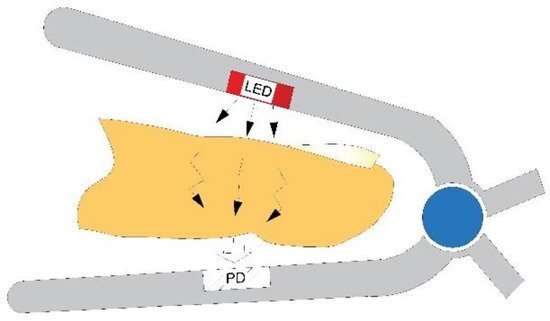
Advancing the potential applications of photoplethysmography, an optical technique used to measure heart rate in cardiovascular and mental health monitoring, requires the analysis of complex nonlinear data from photoplethysmograms (PPGs). Circumventing traditional analytical methods of resolving the complex and dynamic PPG signals, researchers from Tokyo University of Science have used nonlinear analysis to determine the accuracy of dynamical features estimated using short PPG signals.
With the rising burden of cardiovascular and mental disorders across the world, the need for early detection and timely health monitoring is becoming increasingly pertinent. Wearable devices serve as a practical, affordable, and non-invasive approach for systematic and prolonged health monitoring. “Photoplethysmography,” a simple optical technique based on photoelectric pulse wave signaling, has been in use for decades for monitoring parameters like heartbeat, oxygen rate, and changes in blood volume in clinical settings as well as on-the-go through wearable devices. These measurements rely on basic signal processing and analysis such as noise filtering and movement reduction.
Information extracted from the dynamics of photoplethysmograms (PPGs), the biological signal recordings made in photoplethysmography, can be used for physiological and mental health monitoring, but such advanced applications are impeded by high measurement noise and movement artifacts in PPGs, particularly those obtained using wearable devices.
So how can the complex nonlinear dynamics of PPGs be analyzed in order to broaden their clinical applications?
Diving deeper into analyzing the complex characteristics of PPGs, a team of researchers from Japan has evaluated the applicability of nonlinear analysis of short PPG signals in clinical measurements, and the accuracy with which they can estimate the dynamical properties of PPGs. A group of researchers led by Dr. Nina Sviridova, an assistant professor from Tokyo University of Science, and including Prof. Tohru Ikeguchi from Tokyo University of Science, Dr. Tiejun Zhao from Niigata Agro-Food University, and Prof. Akimasa Nakano from Chiba University has published their findings in the special issue “Data Analytics for Mobile-Health” of the journal Sensors. The study was published in Volume 22, Issue 14 of the journal on July 9, 2022.
“Filtered signals can be used for traditional photoplethysmography applications; however, they are not suitable for advanced analysis. As an alternative, only high-quality short segments of PPG signals can be used, but the applicability of nonlinear analysis to such short recordings has not been investigated in detail,” explains Dr. Sviridova.
Advanced nonlinear analysis methods used to estimate PPG dynamics are often limited by the applied data length. Previous studies suggest that recurrent quantification analysis (RQA), a nonlinear analytical approach, is not affected by signal length. In this study, the researchers used RQA to extract the dynamical properties of PPGs such as determinism, divergence, predictability, and complexity from short signals. PPG recordings were obtained from thirty healthy individuals by measuring the transmission of near-infrared light from skin surfaces. These recordings were further sub-sampled to generate sparse time series data. Further, the chaotic “Rössler model” (a model used to describe continuous chaos in dynamic nonlinear systems) was used to compute the relative error, while accounting for noise.
Results suggested that dynamical properties such as determinism, predictability, and entropy can be estimated with good accuracy (less than 1% error) using short time series signals. Comparisons with the noisy Rossler system suggested that in the absence of noise, lower length of time series is acceptable for measuring these properties with accuracy. However, for some properties like divergence, short PPGs were not sufficient for accurate estimation with an acceptable error (lower than 1%).
These observations can help estimate the error associated with dynamical properties in cases where only short length PPG signals are available, and aid future investigations using other photodetectors and studies in different experimental and real-world settings. An understanding of the complex features of PPGs can further improve the clinical applications of wearable health monitoring technologies.
Highlighting the broader applications of their study, Dr. Sviridova says, “The findings of this study will help improve the estimation of health parameters using wearable devices, ultimately accelerating the World Health Organization’s goal of early detection of cardiovascular and mental diseases.”
Source: Read Full Article


